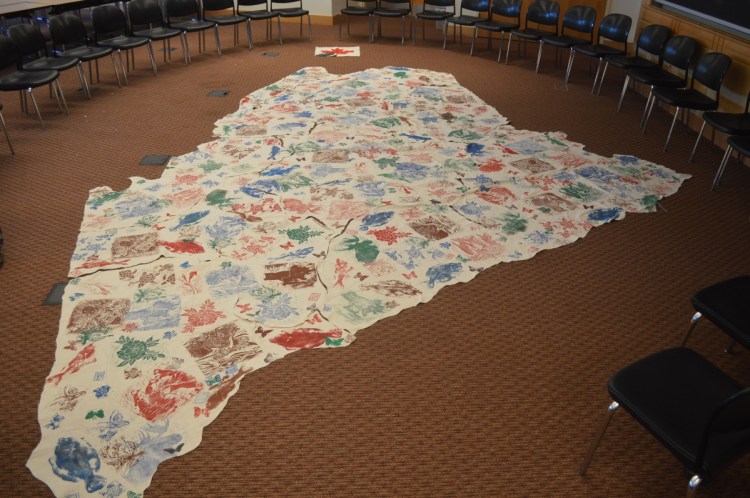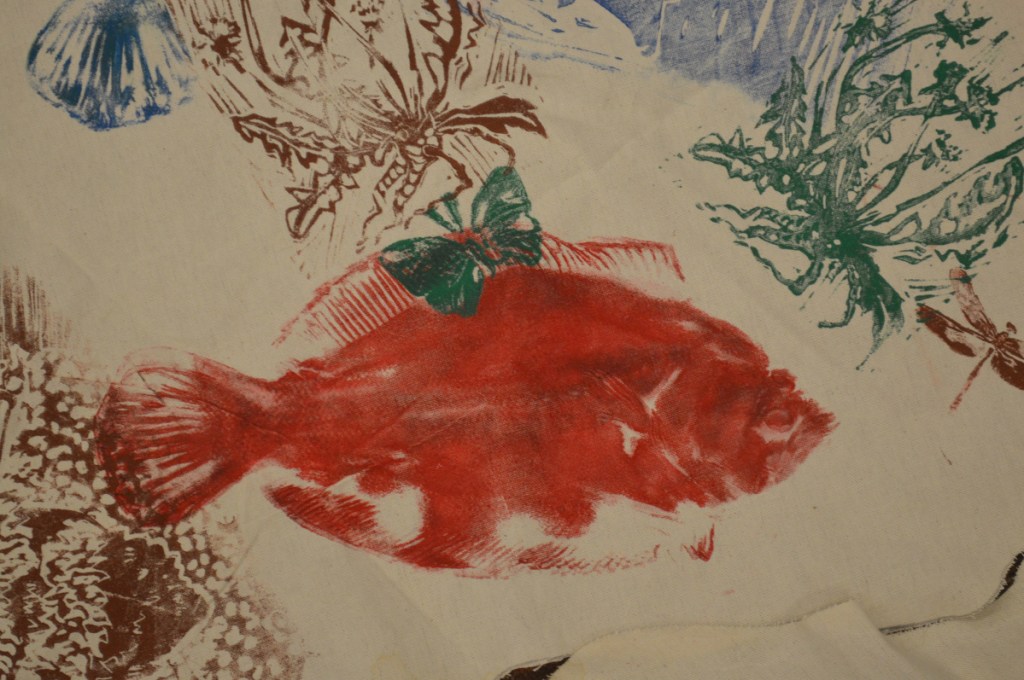AUGUSTA — While community members seated themselves around a large cloth map of Maine, they smiled and introduced themselves to others in the circle. But as they learned — and for many, felt — the historic lesson about Wabanaki people, those smiles were replaced with tears, frowns and shock.
Maine-Wabanaki REACH presented the history of European colonization in Maine and its impact on the local indigenous people Saturday at the Unitarian Universalist Community Church of Augusta. Wabanaki is the name for the indigenous tribes in Maine and around northern New England and southeastern Canada, including Abenaki, Maliseet, Mi’kmaq, Passamaquoddy and Penobscot nations.
The event was interactive, with participants representing both the Wabanaki people and Europeans settling Maine.
First, participants introduced themselves, stating their names, where they grew up, and who the people were who called that place home first. Many were familiar with who the native peoples were; others were not.
“For thousands and thousands of years, other people were growing in that place,” said Barbara Kates, Maine Community Organizer of Maine-Wabanaki REACH, who led the program.
Wabanakis once lived all across Maine, Kates said, but over time their territory was reduced to just one percent of the state.
The cloth map, created by students in an art education class at the University of Maine, depicts plants and animals native to the land. The map was separated into pieces, and the cuts represented major waterways in the land.
Some participants stood on the cloth map, representing the native people before the arrival of Europeans, according to the program’s narrative. The remaining people represented the Europeans, who passed out colored cards to the people on the map.
Each of the colored cards represented a particular impact on the Wabanaki people. The first color was white, which represent the amount of Wabanakis killed because of disease — about three-quarters of the population. As the history was told through the narrative, more Wabanaki representatives stepped off the map.
As participants moved off the map, the cloth sections of the map were pushed inward like rumpled bed sheets to reveal the carpet of the sanctuary, which represented the land inhabited by European settlers.
“The stereotype of the native American is completely wrong,” said Phyllis Cudmore of Augusta, following the event. “We’re not savages … I have a masters degree; my son is going for a dual masters degree.”
Cudmore said that her grandparents, Iroquois of Trois-Riviéres, Quebec, were denied their heritage. “I’ve been living it for quite a long time … I’m proud of who I am. But it’s difficult because a lot of people don’t understand.”
The Maine-Wabanaki REACH (Reconciliation-Engagement-Advocacy-Change-Healing) is a cross-cultural collaborative of Wabanaki and non-native people, and established the Maine Wabanaki-State Child Welfare Truth and Reconciliation Commission.
Abigail Austin — 621-5631
Twitter: AbigailAustinKJ
Send questions/comments to the editors.





Success. Please wait for the page to reload. If the page does not reload within 5 seconds, please refresh the page.
Enter your email and password to access comments.
Hi, to comment on stories you must . This profile is in addition to your subscription and website login.
Already have a commenting profile? .
Invalid username/password.
Please check your email to confirm and complete your registration.
Only subscribers are eligible to post comments. Please subscribe or login first for digital access. Here’s why.
Use the form below to reset your password. When you've submitted your account email, we will send an email with a reset code.